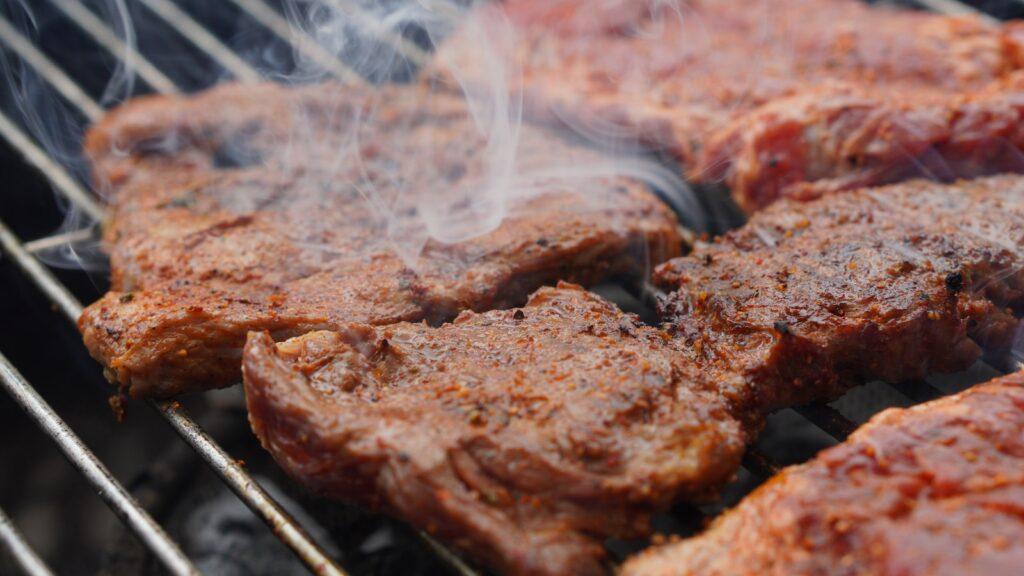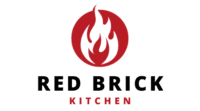Are you captivated by the world of cold smoking? Eager to explore the realm of enticing flavors that cold smokers can unlock? Or perhaps you’re contemplating transforming your existing smoker into a cold-smoking marvel, enabling you to infuse the delectable essence of smoke into cheeses, salmon, bacon, and other culinary treasures. If any of this resonates with your culinary curiosity, then you’ve stumbled upon the ultimate guide that will unveil the wonders of cold smokers and empower you to create your own masterpiece.
The Art of Cold Smoking: A Journey into the Past
Cold smoking, an ancient technique rooted in the annals of history, was initially devised as a method of food preservation. In the Paleolithic era, our resourceful ancestors discovered that hanging meats in smoky abodes extended their lifespan by inhibiting bacterial growth. Wood smoke’s natural antimicrobial properties acted as a safeguard against spoilage, enabling them to amass sustenance during harsh winter months. The origins of meat curing lay not in smoky flavor infusion, but in the art of preservation.
As modern refrigeration revolutionized food storage, the focus shifted from preservation to culinary enhancement. Cold smoking, once a necessity, evolved into a means of bestowing an irresistible smoky allure upon foods. From succulent smoked salmon to crispy bacon and artisanal cheeses, the array of cold-smoked delicacies continues to captivate palates. Beyond these culinary classics, the cold-smoking canvas extends to embrace nuts, roasts, cheeses, and more, elevating each dish with a nuanced symphony of smoke.

Unlocking Flavorful Horizons: A Quest for Delectable Tastes
Cold smoking stands as an embodiment of culinary finesse, allowing enthusiasts to infuse smokiness into dishes without subjecting them to the rigors of heat. However, a caveat lingers—cold smoking is not a bacterial slayer. Its temperature range, ripe for pathogenic growth, necessitates stringent caution. Food safety mandates that cold smoking be confined to professional environments or well-trained individuals equipped with suitable equipment. The stakes are high, the responsibility immense—undoubtedly, the journey into cold smoking demands unwavering diligence.
A Word of Caution: Navigating the Cold Smoking Terrain
Enter the cold smoker—a versatile tool, limited only by imagination. Embracing myriad forms, the essence remains simple: a vessel to contain smoke and a mechanism to generate it. From traditional smokehouses to contemporary electric smokers, the cold-smoking landscape teems with possibilities. Commercial facilities boast controlled environments, while backyard enthusiasts can tap into the magic using smoke generators that impart minimal heat. Existing smokers and grills become conduits for cold-smoking creations, their potential multiplied by the presence of these ingenious devices.
Decoding the Cold Smoker: Crafting Smoke-Kissed Creations
The art of cold smoking thrives within a temperature range below 86°F, a realm where pathogens languish, and smoke flourishes. With precision akin to a conductor orchestrating a symphony, the cold smoker envelops ingredients in wisps of smoke. The smoldering dance weaves flavors, while the temperature range outside 86°F ensures the safety of the culinary endeavor. Unlike its heat-induced counterpart, cold smoking transforms without cooking, a journey marked by patience and skill.
Cold Smoking Temperatures: A Delicate Balance
Temperature mastery in cold smoking is an intricate dance. The threshold of 86°F separates the safety of the culinary act from the peril of pathogen proliferation. In the annals of food safety, the danger zone spans 40°F to 140°F, encompassing the realm of cold smoking. By embracing temperatures below 86°F, practitioners navigate the treacherous waters, preserving not just food but culinary integrity.
| Temperature Range | Significance |
|---|---|
| Below 86°F | Safe Smoking |
| 86°F – 112°F | Pathogen Growth Zone |
| 40°F – 140°F | Danger Zone |
Cold Smoking Equipment: From Smokers to Smoke Generators
Within the realm of cold smoking, two protagonists take center stage—the cold smoker and the smoke generator. Electric smokers with cold-smoking attachments, like those from renowned brands Bradley and Masterbuilt, offer a dual identity. Embracing both hot and cold smoking realms, these marvels amplify culinary horizons. Cold smoke generators, from tubes to electric-powered units, offer a DIY avenue, breathing life into existing equipment. Their shared mission: channeling smoke’s magic without compromising safety.
Hot Smoking vs. Cold Smoking: A Culinary Showdown
The culinary arena witnesses a showdown—hot smoking versus cold smoking. Hot smoking, a culinary journey above 185°F, introduces flavors through the heat of the moment. The art of cold smoking, in contrast, emerges at temperatures below 85°F, painting flavors upon an uncooked canvas. It is a dance of temperatures, moisture, and culinary creativity—two siblings in the realm of smoke-kissed delights.
Mastering the Technique: How to Cold Smoke Foods
Cold smoking is a journey of preparation and patience, where temperatures and time intertwine to create culinary symphonies. To embark on this voyage, ensure adherence to key steps:
- Choose the Right Day: Embrace the cold—the ally of cold smoking. Opt for chilly days or nights, harnessing ambient temperatures to uphold the art’s integrity.
- Prep the Cooking Space: Sanitize all surfaces in contact with food. Heat the smoker or grill to 350°F for 15 minutes, then let it cool before loading.
- Install the Smoke Generator: If employing an external smoke generator, follow the manufacturer’s guidance. Fill it with fuel and place it away from the food.
- Control Airflow: Ideal for charcoal grills or smokers, regulate airflow to curate the perfect smoke infusion.
- Load and Monitor: With smoke generated and temperatures controlled, load the food and monitor the process. Begin with short smoking times and gradually extend them as familiarity grows.
Safety First: Navigating Cold Smoking Precautions
As the curtain rises on the cold-smoking stage, safety assumes a starring role. The trajectory is guided by stringent precautions, upholding food hygiene and consumer well-being. Key precautions include:
- Maintain Sterility: Sterilize all equipment and surfaces in contact with food. Heat the smoker or grill to 300°F for 30 minutes before use.
- Chill to Perfection: Refrigerate cold-smoked items until ready to consume, preserving their freshness and flavor.
- Respect Space: Adequate spacing between items ensures smoke’s embrace. Avoid overcrowding to allow for optimal smoke penetration.
- Swift and Steady: Swiftly transition cold-smoked goods from preparation to refrigeration, minimizing potential hazards.
Embarking on a Flavorful Journey: Choosing the Best Cold Smoker
As the quest for the perfect cold smoker commences, two avenues beckon: full cold smokers and smoke generators. The choice hinges on the culinary vision and equipment at hand.
- Full Cold Smokers: Models like the Bradley Digital 4-Rack with a Cold Smoke Generator offer versatility and precision. With the ability to produce both hot and cold smoke, these units open avenues for culinary exploration.
- Smoke Generators: Devices like the A-Maze-N Pellet Smoker Tray and the Smoke Daddy Big Kahuna Cold Smoke Generator unlock a DIY route. Their offerings range from simplicity to sophistication, catering to diverse preferences.
Wrapping Up Cold Smokers
Cold smoking, a culinary dance with smoke’s ethereal essence, promises flavors that linger in memory. From its ancient origins in preservation to its contemporary role in elevating dishes, cold smoking’s allure is irresistible. Yet, safety stands as a steadfast companion, guiding practitioners through a labyrinth of flavors and temperatures. Embark on this journey with wisdom and creativity, and let the symphony of smoke grace your culinary creations.
FAQs About Cold Smokers
What is Cold Smoking and How Does It Work?
Cold smoking is a technique where food is exposed to smoke at low temperatures, typically between 65℉–85℉. The process imparts a delightful smoky flavor to various foods, such as cheese, fish, meats, and vegetables. To achieve this, a cold smoker utilizes separate chambers for smoke generation and food placement. The smoke travels from the fire chamber to the food chamber, ensuring that the heat is kept away from the food.
Is Cold Smoking a Cooking Method?
No, cold smoking is not a cooking method. It enhances flavor without significantly raising the internal temperature of the food. Since the food remains near room temperature for extended periods, it doesn’t eliminate pathogens or inhibit bacterial growth. Cold-smoked foods are often cured with salt before smoking to reduce bacterial growth and preserve the food. However, cured and cold-smoked foods can last longer than untreated items.
What Foods Can Be Cold-Smoked?
Cold smoking can be applied to a variety of foods, including meats, fish, vegetables, and cheeses. The process adds a unique smoky taste that enhances the overall culinary experience. It’s important to note that while cold smoking imparts flavor, additional cooking might be required due to the low smoking temperatures.
How Long Does Cold-Smoking Take?
The duration of cold smoking varies depending on the type of food and the desired intensity of flavor. Cold-smoking cheese can take only a few hours, while larger items like a side of salmon might require 18–24 hours. Since there’s no specific internal temperature to achieve, smoking time can be adjusted to suit your preferences.
What Are the Different Types of Cold Smokers?
Cold smokers come in various types, each with its own characteristics:
- Smoker Tubes: These are easy-to-use devices that fit inside existing grills or smokers. Fill them with wood chips or pellets, place them on the grill grate, and light them. They produce smoke for a few hours and are relatively inexpensive.
- Cold-Smoke Generators: These electric devices can be attached to grills or chambers. They can accommodate wood chunks and chips, offering versatility in flavor. Some electric smokers have compatible cold-smoke attachments, streamlining the installation process.
- DIY Cold Smokers: For the adventurous, building a cold smoker from scratch can be a rewarding project. It can involve repurposing items like an old charcoal grill or even a trash can, along with some duct tubing.
Is Cold Smoking Safe?
Cold-smoking, when done correctly, can be safe. However, since the food is not cooked during the process, it’s important to follow food safety guidelines. Cured and properly cold-smoked foods can last longer, but if the food wasn’t safe to eat before smoking, it won’t be safe afterward. Curing, combined with cold smoking, helps reduce bacterial growth and preserves the food.
Can Cold Smoking Be Done at Home?
Yes, cold smoking can be done at home with the right equipment and precautions. There are various cold-smoking methods that cater to different levels of expertise. Smoker tubes, cold-smoke generators, and DIY setups all offer ways to achieve delicious cold-smoked results in your own backyard.
What Should I Consider When Choosing a Cold Smoker?
When selecting a cold smoker, factors such as ease of use, space requirements, and desired flavor intensity play a role. Smoker tubes are simple and space-efficient, while cold-smoke generators offer more versatility. DIY options provide creative freedom. Choose a smoker that aligns with your preferences and equipment.
Can I Cold Smoke Without Special Equipment?
Yes, with some creativity and DIY spirit, you can create a cold smoker using common items. Repurposing an old charcoal grill or even a galvanized steel trash can can result in a functional cold smoker. Just remember to follow safety guidelines and exercise caution when setting up your own cold smoking setup.
What Foods Pair Well with Cold-Smoking?
Cold-smoking can enhance the flavors of various foods. Cheeses, fish, pork, and vegetables are popular choices. Experiment with different wood flavors to complement your ingredients. Keep in mind that while cold-smoking imparts flavor, additional cooking or preparation might be necessary to ensure food safety and enjoyment.
Last updated: September 24, 2023

